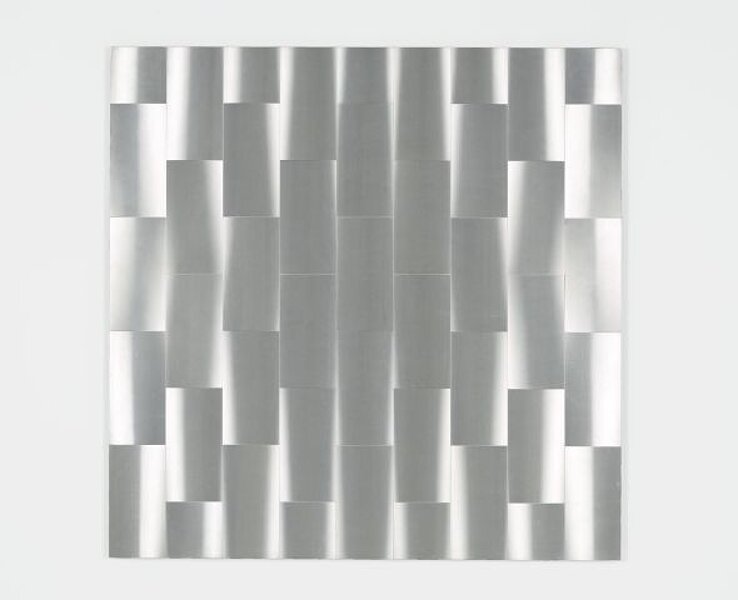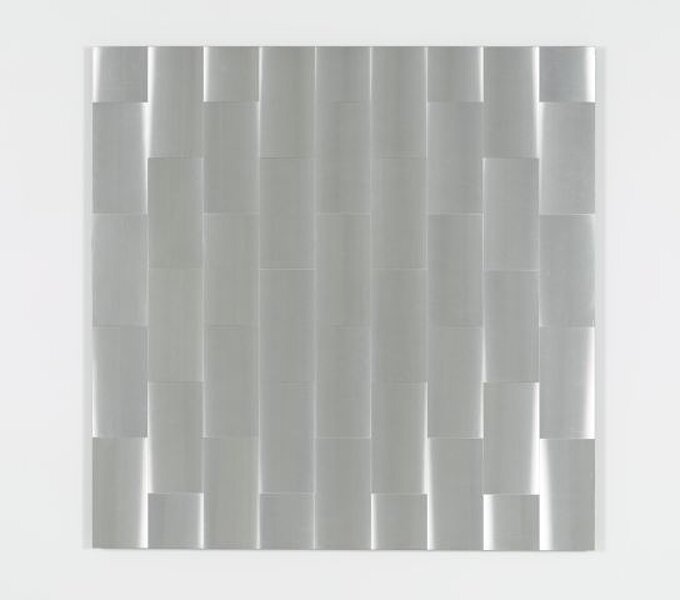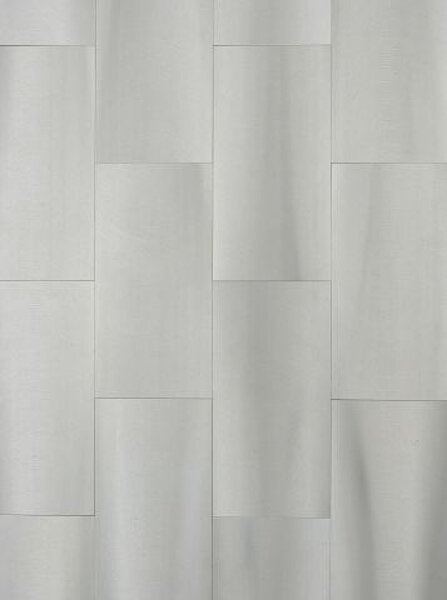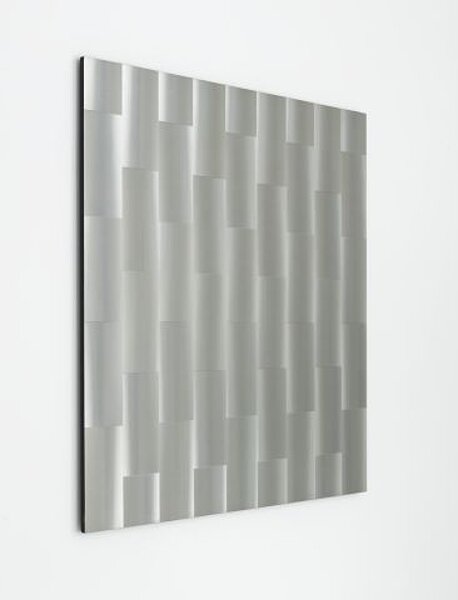
Alviani, Getulio
Superficie a testura vibratile
Vibrating textured surface
1965
| Object description | Aluminum on wood |
|---|---|
| Material | |
| Technique |
Object:
montage
|
| Dimensions |
Objektmaß:
height: 126 cm,
width: 126 cm,
depth: 1,7 cm
|
| Year of acquisition | 1970 |
| Inventory number | B 176/0 |
| Creditline | mumok - Museum moderner Kunst Stiftung Ludwig Wien |
| Rights reference | Bildrecht, Wien |
| Further information about the person | Alviani, Getulio [ULAN] |
| Literature |
Op Art eye attack.op art and kinetic art 1950-1970 |
“Superficie a testura vibratile,” a 1965 work by Italian artist Getulio Alviani, consists of a square surface with a right-angled grid of aluminum. The fields of this grid are set in a zig-zag pattern around the horizontal central axis. The title—“Surface of Vibrating Texture”—describes this work very well. Alviani was interested in materials and techniques that expanded the potential for perception, and he came up with the idea of working on aluminum and other metal plates by hand and arranging them in geometrical patterns. This work is from the series that brought international renown for Alviani and which was included in the legendary founding exhibition of Op Art, the 1965 show “The Responsive Eye” at the Museum of Modern Art in New York. Each individual surface of the work has been ground and polished very carefully, giving the impression of dents and curves and expanding the work into three dimensions. The material has been worked to react in different ways to each location where the work is presented. This leads to a form of visual dialogue with viewers.
© mumok – museum moderner kunst stiftung ludwig wien




